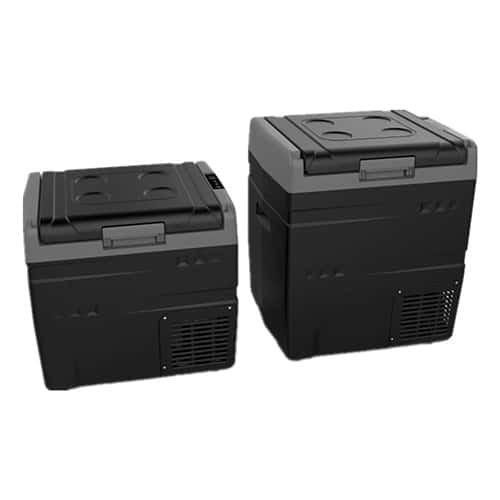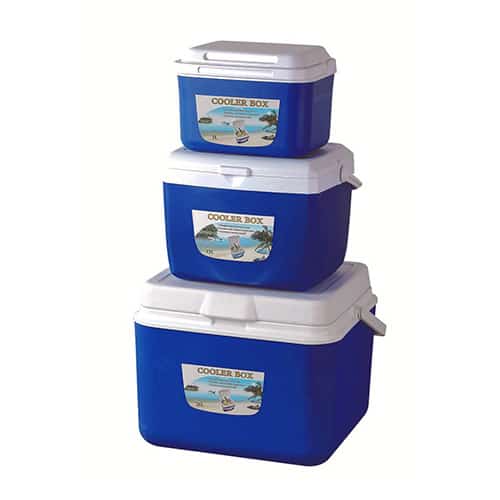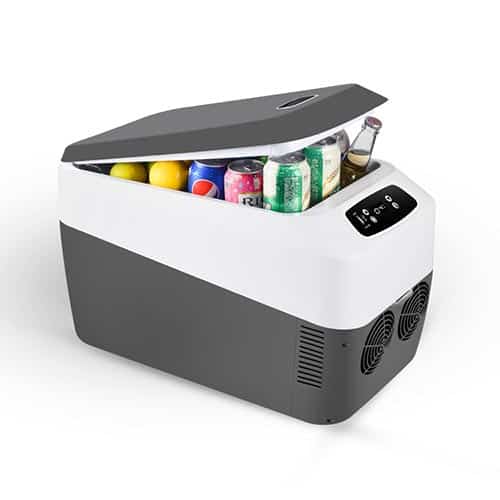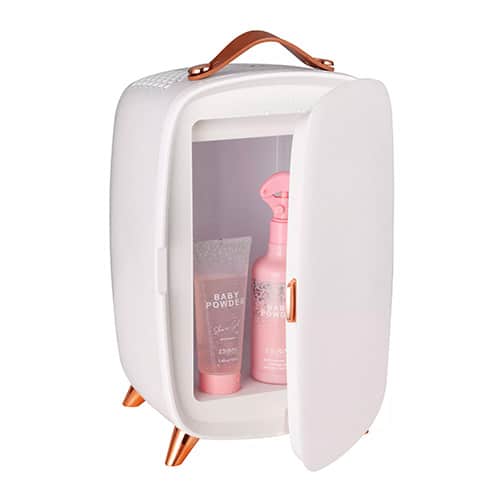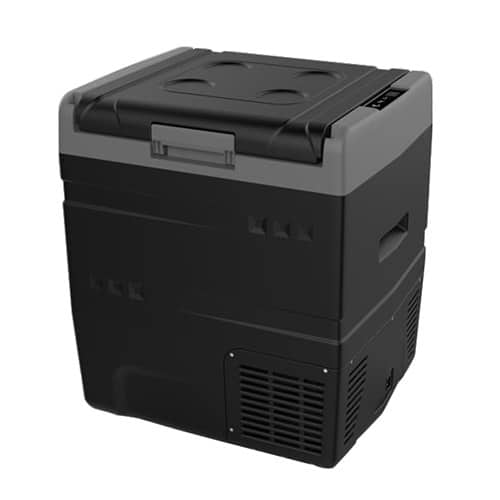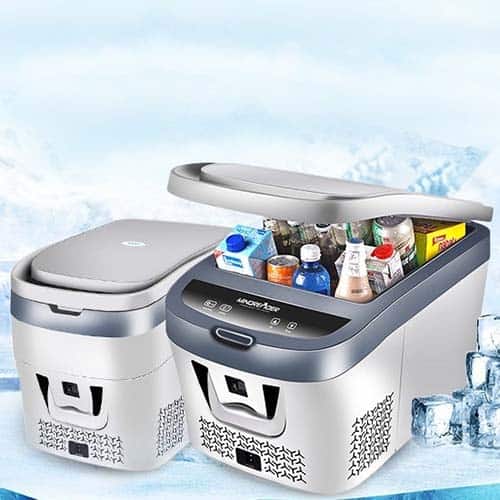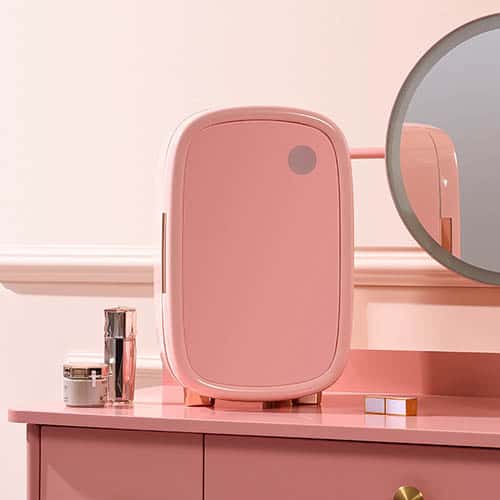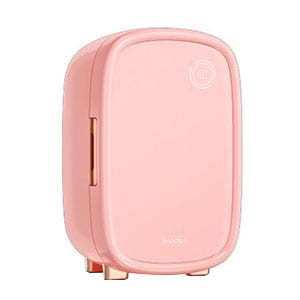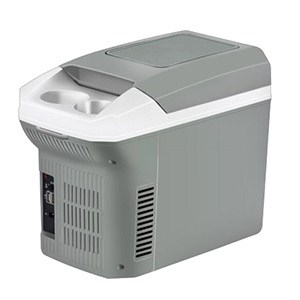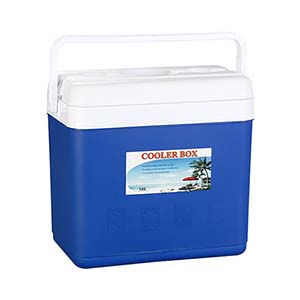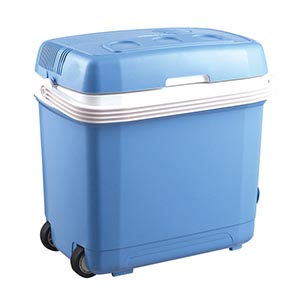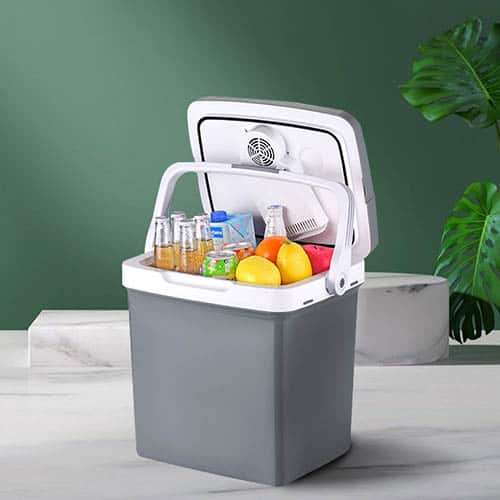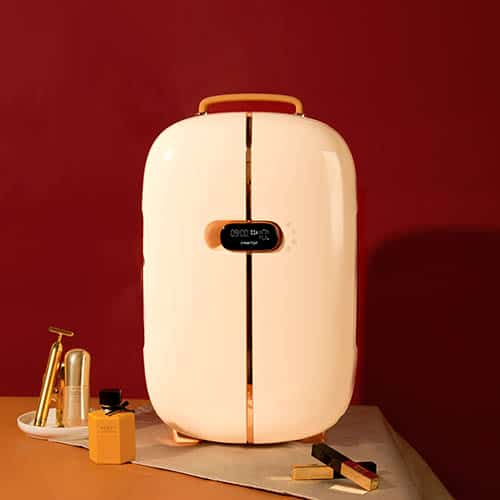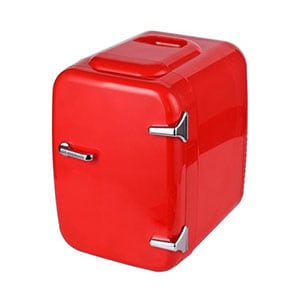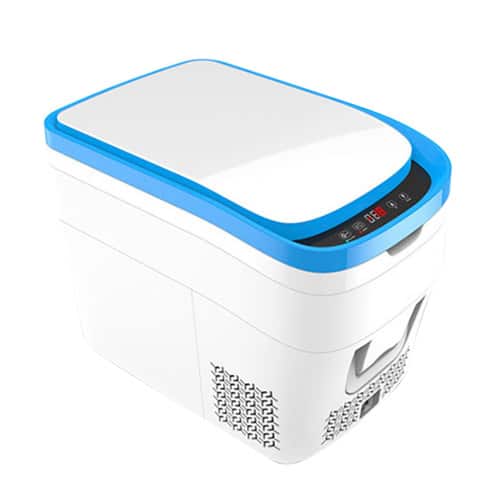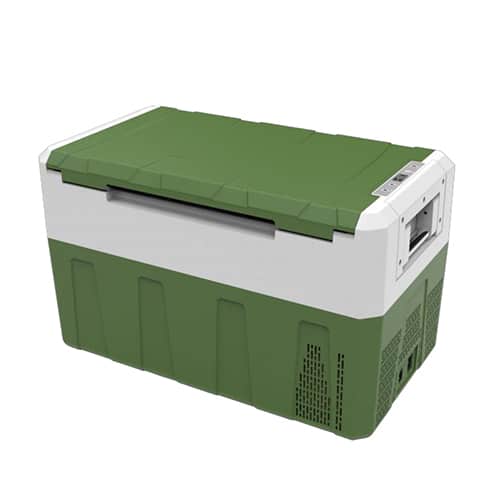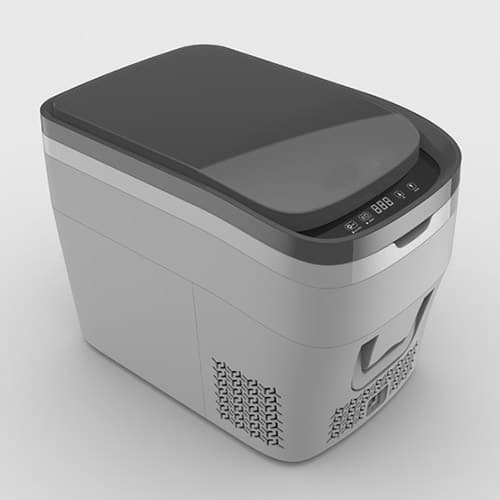When you go camping for three weeks, a refreshing drink during your holiday is always a good idea. Cold drinks as well as food stay good for a longer period if you store them at the right temperature. But what is the best way to keep your food and drink cold? And which cooler box is the handiest for at the campsite? Now we give you recommendations for cooler boxes for every type of holiday.
Cooler boxes: which types are there?
Before looking at the various cooling situations, it is good to know that cooler boxes can be categorized roughly into 3 different types: the compressor cooler box, the thermoelectric cooler box and the passive cooler box. Which cooler box is the best for at the campsite depends on your demands. Do you want a cooler box that operates on a power supply or one that does not need plugging in? Is it important that the cooler box is silent? And what are you willing to pay for it? Because there are inexpensive cooler boxes as well as more expensive models.
The following contents list the most important advantages and disadvantages of each type. It can help you decide which cooler box would be the best for you.
Type 1: Compressor cooler box
Advantages: Two advantages of the compressor cooler box are that it keeps items very cool (it can even freeze) and that, in comparison to the thermoelectric cooler box, uses relatively little energy.
Disadvantages: The biggest disadvantage of the compressor cooler box is that it is rather noisy, rather heavy and on the expensive side.
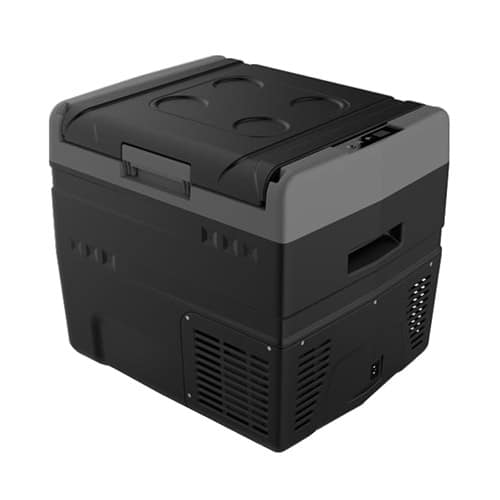
Kelylands Compressor Cooler Box
Type 2: Thermoelectric cooler
Advantages: Two important advantages of the thermoelectric cooler box are the relatively low purchase price and its light weight.
Disadvantages: Two disadvantages are that the thermoelectric cooler box only cools a maximum of 20℃ below the ambient temperature and makes noise due to the ventilation.
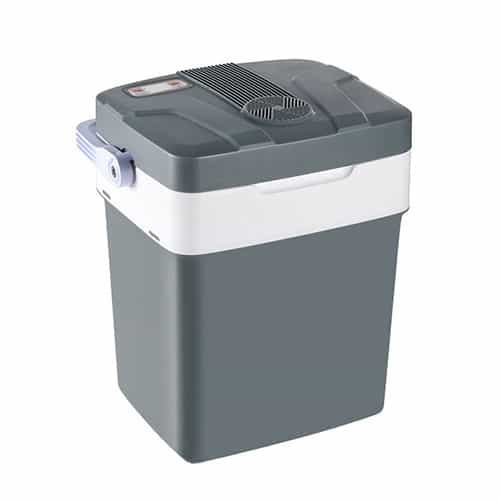
Kelylands Thermoelectric Cooler Box
Type 3: Passive cooler box
Advantages: The advantage of the passive cooler box is that no power is required, making it lightweight and inexpensive. You simply fill it with ice packs or cooling elements.
Disadvantages: The most important disadvantage of the passive cooler box is that it does not have much cooling capacity and that capacity decreases quickly.
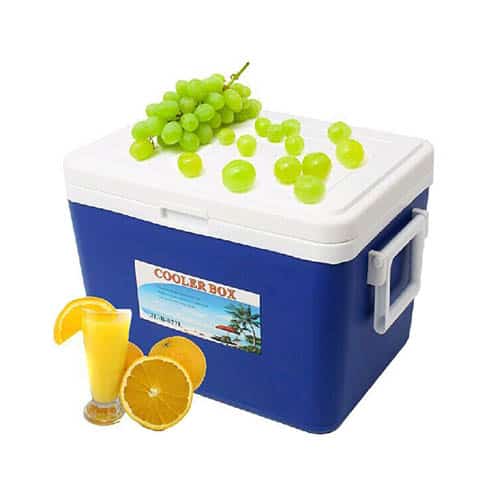
Kelylands Passive Cooler Box
A cooler box for en route
If you are going on holiday and have a long journey ahead of you, it is nice to take your own food along. You could choose a passive cooler box but a car cooler box offers more advantages. The 12V connection means you can plug this cooler box in your car’s (cigarette) socket. Cooling elements are not necessary, giving you more room in your cooler box for food and drink. Most car cooler boxes also have a standard plug, allowing you to use it in your tent as well.
A cooler box for a day out
While on holiday, you might like to take a trip to the beach or elsewhere, for example, an amusement park. Taking a heavy, electric cooler box is not practical in this case and a passive cooler box will suffice. Another possibility would be a cooling backpack or cool bag. In both cases, cooling elements are required to keep food and drink cool. The advantages of both the passive cooler box and the cool bag are that they provide sufficient cooling for a shorter period and are considerably less heavy.
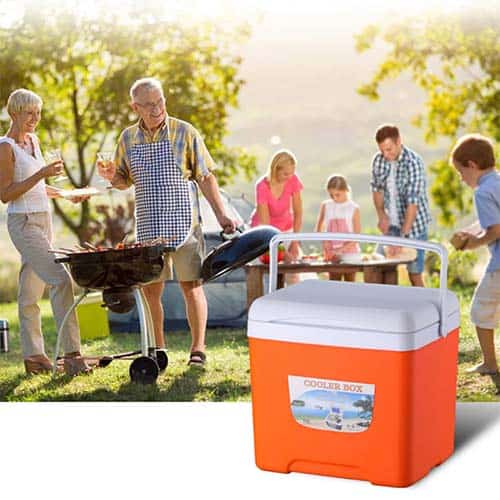
A cooler box is ideal for storing and transporting food and drink for a picnic!
A cooler box for in the tent or trailer tent
If you are traveling with a tent or trailer tent, you may decide to choose a passive cooler box with cooling elements. One that works on electricity is even better. You then have two options: a thermoelectric cooler box or a compressor cooler box. If you are going to a campsite in a hot country, it is best to choose a compressor cooler box even though it makes more noise. This type of cooler box is also necessary for a tent, where the temperatures can reach more than thirty degrees. However, for a campsite at a holiday destination that is less hot, a thermoelectric cooler box should be just fine.
A cooler box for in the caravan or motorhome
If you are going on holiday in a caravan or motorhome, it most likely has a fridge. This is by far the most practical way to keep your food and drinks cold. A caravan can be connected to the battery of the car while driving, which means that the fridge remains operating. But the power from your car may not suffice for the fridge if you are traveling in a hot country. This could result in less than peak performance. For this reason, it is a good idea to make sure that the fridge is already good and cold before you leave. Place frozen packages or bottles of drinks in the fridge to keep the contents good and cold.
A cooler box for at the campsite
Many campsites have a communal fridge and/or freezer that you can use (for a charge). This is very common at many small campsites and farm campsites. Would you like to have more room? There are many campsites where you can rent a private fridge for your pitch. This is great if you are camping with a tent or trailer tent. Do you have your own cooler box with cooling elements? Make sure you take along enough elements to be able to exchange them and enjoy cold products continuously. A handy service that many campsites offer is that you can freeze your cooling elements in the campsite’s freezer or freezing compartment.
The above is all that we want you to learn more about different cooler boxes before you start to go camping. If you would like to find out more about Kelylands cooler boxes, please feel free to leave a message online, chat with our team on WhatsApp +86 170 5109 5790 or send us an email at sales@kelylands.com. We always welcome your inquiries.

